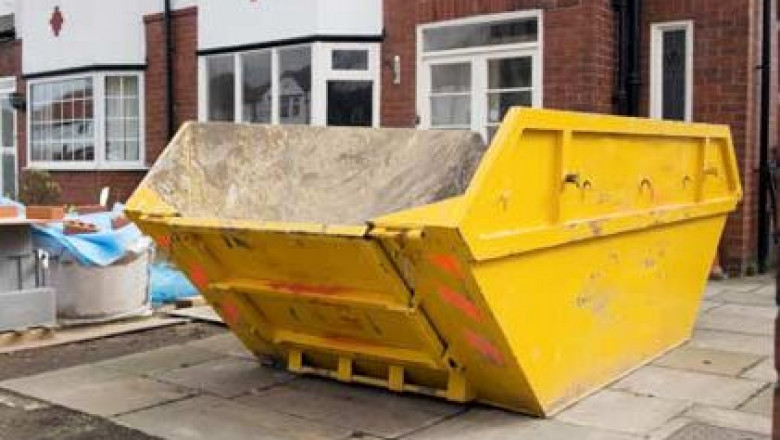views
Hiring a skip is one of the most efficient ways to manage waste during home renovations, garden clean-ups, or office clear-outs. However, knowing what you can and cannot dispose of in a skip is crucial—not just for legal reasons, but also for safety and environmental concerns. Whether you’re booking your first skip or you’re a seasoned renovator, understanding the do’s and don’ts can save you time, money, and trouble. If you're considering skip hire in Sutton, here's a handy guide to the top 10 things you can and can't put in a skip.
✅ 5 Things You Can Put in a Skip
-
Household Waste
General household items like old furniture, toys, clothes, and non-electrical items are all acceptable. These are among the most common contents in domestic skips and are generally easy for waste management companies to sort and recycle. -
Garden Waste
Skips are perfect for getting rid of green waste such as branches, grass clippings, leaves, soil, and hedge trimmings. However, avoid mixing this with general household waste if you intend for it to be composted or recycled as green waste. -
Construction Debris
Bricks, rubble, tiles, and plasterboard are commonly disposed of in skips during renovation projects. Just ensure you don’t overload the skip, as heavy items can exceed weight limits and may require a different skip type. -
Wood and Timber
Old cupboards, shelving, doors, and other wooden materials can safely go in a skip. If they are treated wood, check with the skip hire company as some treated woods require special disposal. -
Metals
Most metal items are fine to throw into a skip, including old pipes, frames, or appliances (minus electronic parts). These are typically sent for recycling, helping to reduce landfill waste.
❌ 5 Things You Can’t Put in a Skip
-
Electrical Items (WEEE Waste)
Electrical items such as fridges, TVs, computers, and microwaves fall under the Waste Electrical and Electronic Equipment (WEEE) Directive. These need special disposal procedures and cannot be thrown in a general skip. Local recycling centres often have specific drop-off points for these items. -
Asbestos
This is a hazardous material commonly found in older buildings. Asbestos poses serious health risks if handled improperly and must be removed by licensed professionals. Under no circumstances should asbestos be placed in a skip. -
Batteries
Car batteries, lithium batteries, and other types contain hazardous chemicals and heavy metals. These must be taken to designated recycling or disposal facilities where they can be safely processed. -
Paint and Solvents
Old tins of paint, glue, and solvents are considered hazardous waste due to their flammable and toxic nature. These products must be disposed of according to specific regulations to prevent contamination of land and waterways. -
Tyres
Most skip hire services won’t accept tyres because they require specialised recycling processes. Instead, many garages and tyre shops offer recycling services when you get new tyres fitted.
Why These Rules Matter
The main reasons behind skip restrictions boil down to safety, legality, and environmental protection. Certain materials can harm skip handlers or the environment if not disposed of correctly. Others, like electrical appliances, require dismantling and separation to recover valuable components and avoid polluting landfills.
Failing to follow skip hire rules can result in additional charges or penalties. Worse still, your entire skip might be refused for collection if it's found to contain prohibited items, which can disrupt your project schedule and cost more in the long run.
Tips for Using Your Skip Wisely
-
Segregate Waste Where Possible: Keeping recyclables separate from general waste helps improve recycling efficiency.
-
Don’t Overfill: Never fill a skip above its rim. Overfilled skips may be illegal to transport and could incur extra charges or be rejected.
-
Know What Size You Need: Choosing the right skip size saves money and hassle. If you're unsure, consult your skip provider for advice.
-
Check for Permits: If you need to place the skip on a public road, you’ll likely need a permit from your local council.
Conclusion
Being informed about what you can and can’t put in a skip ensures that your waste is disposed of safely and responsibly. It also keeps you compliant with local waste regulations and helps protect the environment. If you're planning a clear-out or construction project and need reliable waste management, look for professional services like skip hire in Sutton to guide you through the process.
By following these guidelines, you’ll not only keep your project running smoothly but also contribute to a cleaner, greener future.













![¿Cómo puedo contactar con una persona en vivo en los vuelos de Frontier? [Guía paso a paso]](https://timessquarereporter.com/public/upload/media/posts/2025-06/12/como-puedo-contactar-con-una-persona-en-vivo-en-los-vuelos-de-frontier-guia-paso-a-paso_1749705127-s.jpg)


![How Do I Get to a Live Person at Frontier Flights? [Step-by-Step Guide]](https://timessquarereporter.com/public/upload/media/posts/2025-06/12/how-do-i-get-to-a-live-person-at-frontier-flights-step-by-step-guide_1749705004-s.jpg)





Comments
0 comment